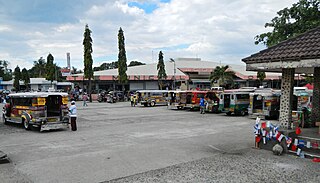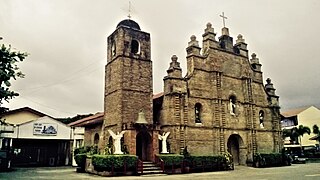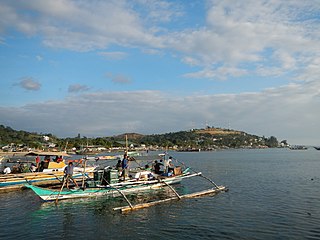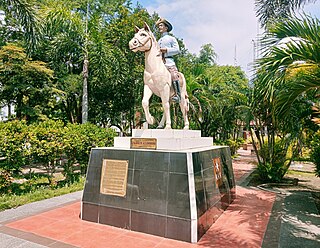
Mabalacat, officially Mabalacat City, is a 3rd class component city in the province of Pampanga, Philippines. According to the 2020 census, it has a population of 293,244 people.

Siniloan, officially the Municipality of Siniloan, is a 2nd class municipality in the province of Laguna, Philippines. According to the 2020 census, it has a population of 39,460 people.

Botolan, officially the Municipality of Botolan, is a 1st class municipality in the province of Zambales, Philippines. According to the 2020 census, it has a population of 66,739 people.

Alicia, officially the Municipality of Alicia, is a 1st class municipality in the province of Isabela, Philippines. According to the 2020 census, it has a population of 73,874 people.

Cabangan, officially the Municipality of Cabangan, is a 4th class municipality in the province of Zambales, Philippines. According to the 2020 census, it has a population of 28,118 people.

Castillejos, officially the Municipality of Castillejos, is a 3rd class municipality in the province of Zambales, Philippines. According to the 2020 census, it has a population of 67,889 people.

Masinloc, officially the Municipality of Masinloc, is a 1st class municipality in the province of Zambales, Philippines. According to the 2020 census, it has a population of 54,529 people.

San Felipe, officially the Municipality of San Felipe, is a 4th class municipality in the province of Zambales, Philippines. According to the 2020 census, it has a population of 25,033 people.

San Marcelino, officially the Municipality of San Marcelino, is a 1st class municipality in the province of Zambales, Philippines. According to the 2020 census, it has a population of 37,719 people.

San Narciso, officially the Municipality of San Narciso, is a 4th class municipality in the province of Zambales, Philippines. According to the 2020 census, it has a population of 30,759 people.

Santa Cruz, officially the Municipality of Santa Cruz, is a 1st class municipality in the province of Zambales, Philippines. According to the 2020 census, it has a population of 63,839 people.

Subic, officially the Municipality of Subic, is a 1st class municipality in the province of Zambales, Philippines. According to the 2020 census, it has a population of 111,912 people.

Malvar, officially the Municipality of Malvar, is a 2nd class municipality in the province of Batangas, Philippines.

Arayat, officially the Municipality of Arayat, is a 1st class municipality in the province of Pampanga in the Philippines. According to the 2020 census, it has a population of 144,875 people.

Guagua, officially the Municipality of Guagua, is a 1st class municipality in the province of Pampanga, Philippines. According to the 2020 census, it has a population of 128,893 people.

Santa Ana, officially the Municipality of Santa Ana, is a 3rd class municipality in the province of Pampanga, Philippines. According to the 2020 census, it has a population of 61,537 people.

Gerona, officially the Municipality of Gerona, is a 1st class municipality in the province of Tarlac, Philippines. According to the 2020 census, it has a population of 94,485 people.

Mayantoc, officially the Municipality of Mayantoc, is a 3rd class municipality in the province of Tarlac, Philippines. According to the 2020 census, it has a population of 32,597 people.

San Clemente, officially the Municipality of San Clemente, is a 5th class municipality in the province of Tarlac, Philippines. According to the 2020 census, it has a population of 13,181 people.

Tarlac City, officially the City of Tarlac, is a 1st class component city and capital of the province of Tarlac, Philippines. According to the 2020 census, it has a population of 385,398 people.





























